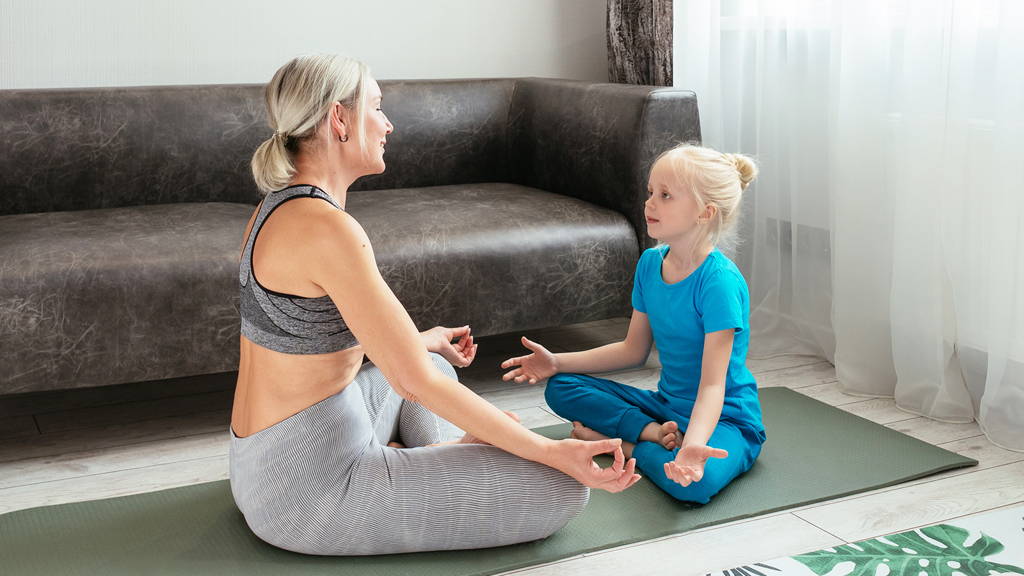September is Self-Care Awareness Month! In keeping with this theme, we’re exploring grounding strategies to keep kids calm. The best thing about grounding strategies is that they can be used at every stage of life to hone focus, balance perspective, and manage mood.
Even if you’ve never heard of grounding strategies, you can effectively pass them on to your kids and use them in your own life, too! Grounding is simple, free, and accessible to anyone. All you need is an open mind and a few minutes to learn about grounding exercises and how they work.
What is a Grounding Exercise?
Grounding strategies–also called grounding exercises–are actions you can take in the middle of anxiety, overwhelm, or panic. They are also used for dissociation, PTSD, and other traumatic responses.
Put simply, grounding is a way of changing perspective. It helps the person struggling with feelings of anxiety or overwhelm remember where they are, connect to their immediate environment, and feel empowered again. In other words, grounding exercises help people calm down in moments of distress.
You can do grounding exercises anywhere, anytime. If it couldn’t be done anywhere, anytime, it wouldn’t be an effective grounding exercise!
Breathing as a Grounding Exercise
Focused or guided breathing is a powerful tool for grounding. Even better, it’s something your children will call upon time and time again as adults! More than just a comforting strategy, deep intentional breathing has science-backed therapeutic benefits.
Ideally, you can learn grounding exercises in a quiet, calm place. Once you get the hang of them, they will come as second nature in all kinds of environments. Here is a breathing exercise you and your child can try:
- Get quiet and comfortable
- Remove your shoes (where appropriate), so you have bare feet or socks
- Sit in a chair or on the ground in a relaxed position
- Breathe in and out slowly; for example: count to five breathing in, count to five breathing out
- Breathe in through your nose
- Push breath out through your mouth
- Close your eyes and repeat the deep breaths three more times
- Listen carefully and name three things you can hear
- Name one thing you can smell
- Name one thing you can feel
- Open your eyes and repeat breathing with five counts in, five counts out
- Rub your feet slowly on a rug or carpet and pay attention to how this feels
- Do an inventory of your body: do you feel better? Is your heartbeat slower?
After breathing intentionally and connecting to your environment, you or your child (or both!) should feel calmer, centered, and grounded. Repeat as many times as you like until you feel better.
Naming as a Grounding Exercise

Panic, anxiety, and overwhelm are states that make us feel trapped in our minds. Round and round we go, spiraling out of control. We can snap ourselves out of this cycle by naming things in our environment. As simple as it sounds, paying attention to something other than our inner dialogue is extremely powerful.
Your child can:
- Name ten things they see
- Name two things they hear
- Name two things they smell
- Name two things they feel
- Name one thing they taste
Or, they can do all of the above! Every second we spend noticing objects, smells, and sounds is a second we aren’t locked in a room of internal chatter. By the time we’ve seen a man blowing his nose, smelled a cinnamon candle, and heard a woodpecker building a house, we’re not in the same headspace.
Stepping out of anxiety for even a few minutes makes a huge difference because it signals to the body that we are not in imminent danger. Our heart rate slows, our blood pressure drops, and our brain fog clears. Naming as a grounding exercise can be done anywhere, anytime!
Conclusion: Grounding Strategies to Keep Kids Calm
Learning grounding strategies is exciting. It’s like carrying a special briefcase with magical tools everywhere you go. Any time stress or overwhelm strikes, you can control your breath, connect with your environment, and clear your mind.
You can also create a special “grounding bag.” In it, put:
- Sour candy - sensorily intense and brings you back to yourself
- A fidget toy - causes you to focus on what’s right in front of you
- Peppermint essential oil - forces you to connect to the present moment–these come in tiny rollers to avoid a mess
- Tactile toy - anything spiky, grooved, or textured to help you reconnect with your body through touch
The Sensory Scout Community is here to lift you up with blogs, discounts, new products, and much more. Don’t miss our first Self Care Awareness Month Blog, Self Care Tips for Kids.
 Skip to content
Skip to content

